Explore the art of bread and soup bowls with recipes this comprehensive guide. Learn about historical significance, diverse recipes, and preparation tips to create comforting, flavorful meals using stale bread and rich broths. Serve in edible bowls for a delightful dining experience!
Bread Soup and Bread Soup Bowls: A Comprehensive Guide to Preparation and Recipes
Bread soup, using stale bread soaked in broth, is a comforting dish. A bread bowl, crafted from a hollowed loaf, enhances the experience. Try Italian Pancotto (with broth, garlic, and herbs) or Tomato Pappa al Pomodoro for vibrant flavors. Serve hot, garnished with fresh herbs and cheese for added delight.
Introduction
Bread soup, a time-honored culinary tradition, transforms humble ingredients into a nourishing and flavorful dish, deeply rooted in the resourcefulness of peasant cuisines across the globe. By utilizing stale bread as a primary component, this dish exemplifies sustainable cooking, turning leftovers into a comforting meal. When served in a bread soup bowl—an edible vessel crafted from a hollowed-out loaf—the dining experience is elevated with a rustic charm.
This article provides a comprehensive exploration of bread and soup bowls, detailing their definitions, historical and cultural significance, preparation methods, regional variations, recipes, and practical considerations for serving. It aims to equip readers with the knowledge to prepare and enjoy these dishes, enhancing culinary experiences.
Definition
Bread soup is a culinary preparation that employs bread, typically stale, as a foundational ingredient, soaked in broth or water to create a thick, hearty dish. The bread absorbs the liquid, contributing to a creamy or chunky texture, depending on the preparation method. Additional ingredients, such as vegetables, herbs, meats, or cheeses, enhance flavor and nutritional value. According to culinary sources, it is a staple in various cultures, particularly in Europe, where it is valued for its simplicity and versatility.
A bread soup bowl is a round loaf of bread, such as sourdough or a boule, with the top removed and interior hollowed out to serve as an edible container for soup. The bread absorbs the soup’s flavors, enhancing the dining experience, and is particularly suited for thick soups to prevent sogginess. This presentation adds both aesthetic appeal and a functional element, as the bowl itself becomes part of the meal.
Historical and Cultural Significance
The practice of bread soup traces its origins to ancient culinary traditions, where bread was a dietary staple and resourcefulness was paramount. The term “soup” derives from the Latin suppa, meaning bread soaked in broth, reflecting its historical role as a means to utilize stale bread. In peasant cuisines across Europe, bread soup was a cornerstone of frugal cooking, ensuring no food was wasted. Its significance is evident in various cultural contexts:
- Italy: Pancotto and ribollita are emblematic of cucina povera (poor cooking), using leftover bread and vegetables to create hearty meals.
- Germany: Brotsuppe, often enriched with eggs and cream, reflects Bavarian traditions of warmth and sustenance.
- England: Brewis, originally bread soaked in meat drippings, evolved into a broth-based soup thickened with bread or oatmeal.
- Portugal: Açorda, featuring cilantro and poached eggs, is a staple in Alentejo cuisine, symbolizing simplicity and flavor.
These variations highlight bread soup’s adaptability, reflecting local ingredients and cultural values of sustainability and community.
Types of Bread Soup
Bread soup manifests in diverse forms across regions, each with unique ingredients and preparation methods. The following table summarizes notable variations:
| Type | Region/Cuisine | Key Ingredients | Characteristics |
|---|---|---|---|
| Pancotto | Italy | Stale bread, broth, garlic, olive oil, herbs | Simple, creamy, often with tomatoes or greens 🌿 |
| Ribollita | Tuscany, Italy | Stale bread, cannellini beans, kale, tomatoes | Hearty, reboiled, vegetable-rich 🍅 |
| Brotsuppe | Bavaria, Germany | Stale bread, meat stock, eggs, cream, croutons | Rich, creamy, often with sausage 🥚 |
| Brewis | Northern England | Stale bread, meat drippings or broth, oatmeal | Rustic, thickened with bread or grains 🥄 |
| Açorda | Portugal | Stale bread, broth, cilantro, poached eggs | Light, aromatic, with a fresh herb focus 🥚 |
These variations showcase the diversity of bread soup, adapting to local tastes and available ingredients.
Basic Bread Soup Recipe: Italian Pancotto
This straightforward recipe for Italian pancotto serves as an accessible introduction to bread soup, suitable for preparation in under 30 minutes.
Ingredients:
- 4 cups vegetable or chicken broth 🍲
- 2 tablespoons olive oil 🫒
- 1 medium onion, finely chopped 🧅
- 2 cloves garlic, minced 🧄
- 1 can (14 oz) diced tomatoes (optional) 🍅
- 4-5 slices stale bread, torn into pieces 🥖
- Salt and pepper to taste 🧂
- Fresh parsley or basil, chopped 🌿
- Grated Parmesan cheese (optional) 🧀
Preparation Instructions:
- Heat olive oil in a large pot over medium heat. Add chopped onion and sauté until translucent, about 5 minutes.
- Add minced garlic and cook for 1 minute until fragrant.
- If using tomatoes, add them to the pot and cook for 5 minutes, stirring occasionally.
- Pour in the broth and bring to a boil.
- Add torn bread pieces, reduce heat to a simmer, and cook for 10-15 minutes, stirring occasionally, until the bread softens and the soup thickens.
- Season with salt and pepper to taste.
- Serve hot, garnished with fresh parsley or basil and a sprinkle of Parmesan cheese if desired.
Preparation Time: Approximately 25 minutes.
Serving Size: Serves 4.
Tips:
- Use a rustic, dense bread like ciabatta or sourdough for optimal texture.
- Adjust broth quantity for desired thickness—less for a thicker soup, more for a lighter consistency.
- Store leftovers in an airtight container in the refrigerator for up to 3 days; reheat with a splash of broth to restore texture.
Bread Soup Variations
Bread soup’s versatility allows for numerous adaptations to suit different tastes and dietary preferences. Below are three variations, each building on the basic pancotto recipe:
1. Vegetable Bread Soup
Description: A nutrient-rich variation incorporating seasonal vegetables for added flavor and texture.
Additional Ingredients:
- 1 carrot, diced 🥕
- 1 celery stalk, diced 🥬
- ½ cup chopped spinach or kale 🌱
Preparation Modifications:
- Add diced carrot and celery with the onion in step 1, sautéing until softened.
- Stir in spinach or kale with the bread in step 5, cooking until wilted.
- Follow remaining steps as in the basic recipe.
Serving Suggestion: Pair with a light salad for a balanced meal.
2. Tomato Bread Soup (Pappa al Pomodoro)
Description: A Tuscan-inspired soup with a rich tomato base, offering a vibrant, tangy flavor.
Additional Ingredients:
- 2 cups canned crushed tomatoes 🍅
- 1 teaspoon dried oregano 🌿
Preparation Modifications:
- Replace diced tomatoes with crushed tomatoes in step 3, adding oregano for flavor.
- Cook for an additional 5 minutes before adding broth to deepen the tomato flavor.
- Follow remaining steps, garnishing with fresh basil.
Serving Suggestion: Serve with a drizzle of extra virgin olive oil for authenticity.
3. Cheesy Brotsuppe
Description: A Bavarian-inspired variation with a creamy, cheesy texture, ideal for colder days.
Additional Ingredients:
- ½ cup heavy cream 🥛
- 1 egg, beaten 🥚
- ½ cup grated cheddar or Gouda 🧀
Preparation Modifications:
- After step 5, reduce heat to low and slowly stir in the beaten egg and cream, cooking for 2-3 minutes until thickened.
- Stir in grated cheese until melted, then serve immediately.
- Garnish with fried bread croutons for added crunch.
Serving Suggestion: Pair with a cold beer for a traditional Bavarian experience.
Bread Soup Bowl Preparation
A bread soup bowl enhances the dining experience by serving as an edible container that absorbs the soup’s flavors. Below are steps to prepare a bread bowl:
Ingredients:
- 1 round loaf of bread (e.g., sourdough, boule, or pumpernickel) 🥖
- Olive oil or melted butter (optional) 🫒
Preparation Instructions:
- Select a round, sturdy loaf with a firm crust and dense interior, approximately 6-8 inches in diameter, to hold the soup without leaking.
- Using a sharp knife, cut off the top of the loaf, about ¼ to ⅓ from the top, to create a lid.
- Cut around the inside edge of the loaf, leaving a ½-inch border of bread attached to the crust to maintain structural integrity.
- Scoop out the soft interior with a spoon or hands, being careful not to puncture the crust. Reserve the scooped-out bread for croutons or soup thickening.
- Optionally, brush the inside of the bowl with olive oil or melted butter and toast in a preheated oven at 350°F (175°C) for 5-10 minutes to enhance sturdiness.
- Fill the bread bowl with hot bread soup and serve immediately to prevent sogginess.
Tips:
- Choose a bread with a thick crust, such as sourdough or pumpernickel, to withstand the soup’s moisture.
- Serve thick soups, like ribollita or brotsuppe, to avoid rapid sogginess; thin broths are less suitable.
- Use smaller rolls for individual servings or larger loaves for sharing at gatherings.
- Toast reserved bread pieces with olive oil and herbs to create croutons for additional texture.
Serving and Enjoying
To maximize the enjoyment of bread and soup bowls, consider the following serving suggestions:
- Garnishes 🌿: Enhance flavor and presentation with fresh herbs (parsley, basil, or chives), a drizzle of extra virgin olive oil, or grated cheese (Parmesan, Pecorino, or cheddar).
- Sides 🥗: Pair with a light green salad, roasted vegetables, or crusty bread for dipping to create a balanced meal.
- Beverages 🍷: Complement with a light white wine (e.g., Pinot Grigio), a cold beer, or a non-alcoholic option like iced tea to suit the soup’s flavor profile.
- Presentation 🍲: Serve in bread bowls for a rustic, communal experience, or use ceramic bowls for a traditional presentation, ensuring the soup is hot to enhance aroma and flavor.
Nutritional Benefits
Bread soup is a nutritious option due to its diverse ingredients. Stale bread provides carbohydrates for energy, while broth and vegetables contribute vitamins, minerals, and fiber. For example, ribollita with kale and beans offers protein and antioxidants, while brotsuppe with eggs and cream provides healthy fats. A typical serving (1 cup) of vegetable-based bread soup contains approximately 150-250 calories, depending on ingredients, making it a balanced meal choice.
Practical Considerations
To ensure a successful bread soup experience, consider the following:
- Bread Selection: Use dense, rustic bread like ciabatta, sourdough, or a country loaf for optimal texture and flavor absorption.
- Food Safety: Store perishable ingredients, such as broth or cream-based soups, in a refrigerator or cooler with ice packs until serving to prevent spoilage, especially for outdoor events.
- Preparation Time: Most recipes require under 30 minutes, but pre-soaking bread or preparing vegetables in advance can further streamline the process.
- Dietary Adaptability: Offer vegetarian or vegan variations by using vegetable broth and omitting dairy or meat ingredients to accommodate diverse dietary needs.
- Storage: Store leftover soup in an airtight container in the refrigerator for up to 3 days; reheat with a splash of broth to restore consistency. Bread bowls should be used immediately to avoid sogginess.
Conclusion
Bread and soup bowls represent a timeless culinary tradition that transforms simple, often leftover, ingredients into a comforting and flavorful meal. From the rustic Italian pancotto to the hearty Tuscan ribollita and creamy Bavarian brotsuppe, these dishes showcase the diversity and adaptability of bread soup across cultures. Serving them in edible bread bowls adds a delightful, rustic element, enhancing both flavor and presentation.
With straightforward preparation methods and versatile recipes, It is an accessible and crowd-pleasing option for home cooks and event organizers alike. By leveraging the techniques and tips provided, individuals can create memorable dining experiences that celebrate the rich history and culinary potential of bread soup.
References
- Wikipedia: Bread Soup
- Food52: Italian Bread Soup (Pancotto)
- Juls’ Kitchen: Brotsuppe, Bavarian Bread Soup
- Veggie Society: Italian Bread Soup Recipe (Pappa al Pomodoro)
- Homesteading Family: Bread Soup Recipe
- Taste Cooking: Bread Soup From the Lost Years
- Food Timeline: History Notes—Soup
- Southern Living: Tailgate Food Safety
- Healthline: Nutritional Benefits of Soup Ingredients
Note: This article is for informational purposes only and not professional advice. Verify ingredient quantities and cooking times based on specific equipment and preferences before preparing bread soup.
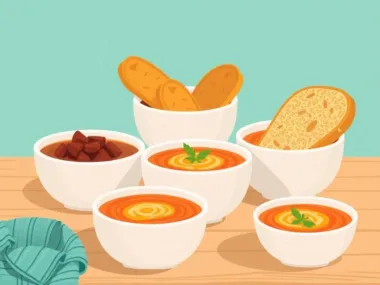
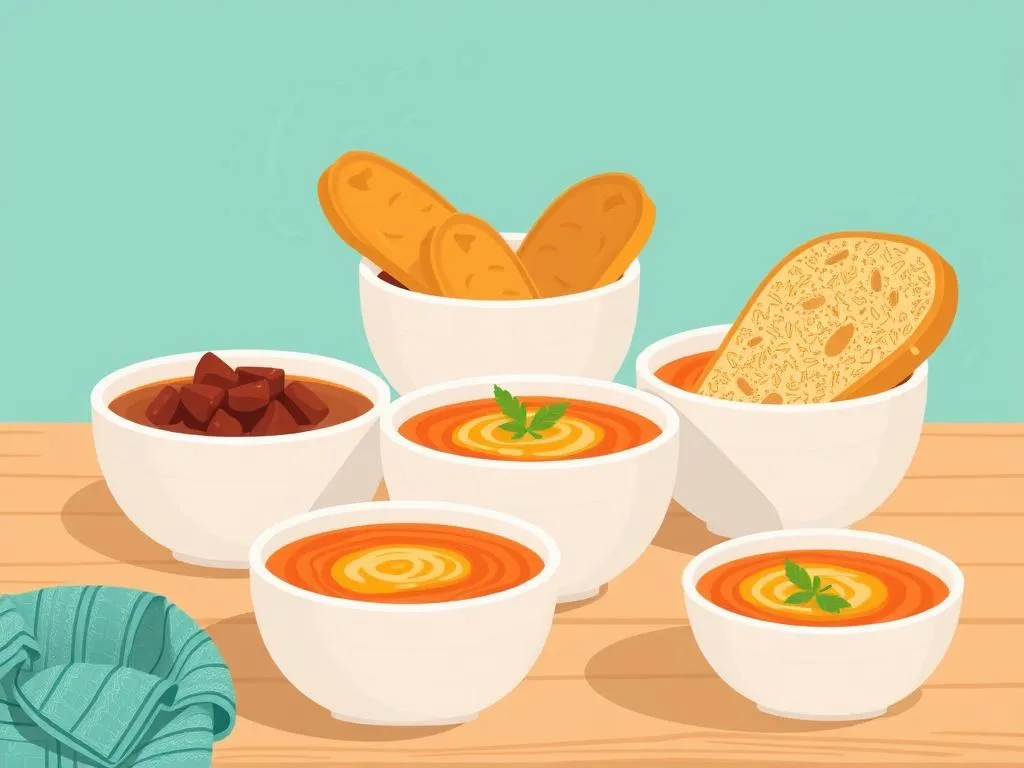




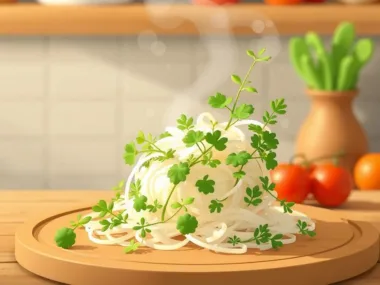

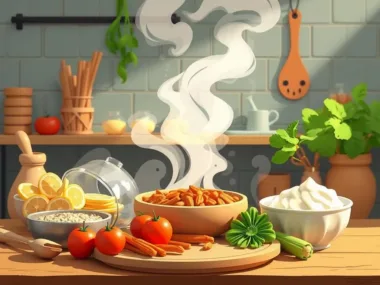



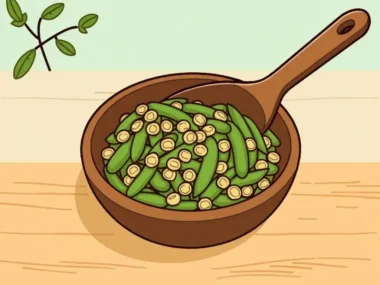
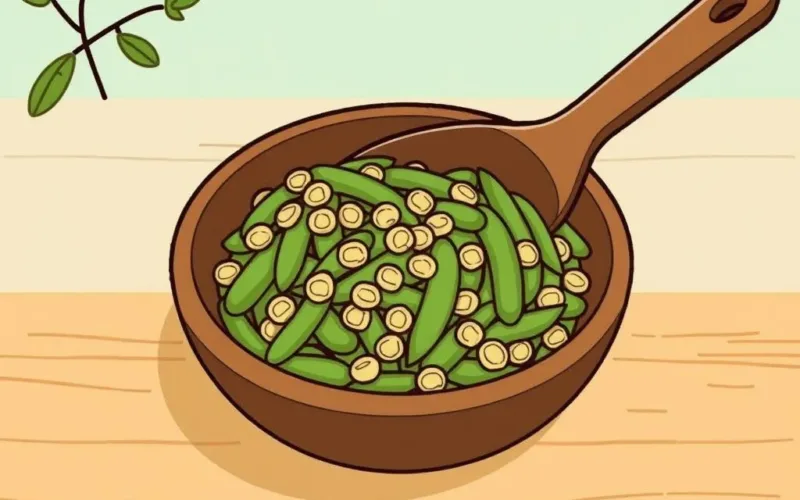
Leave a Reply